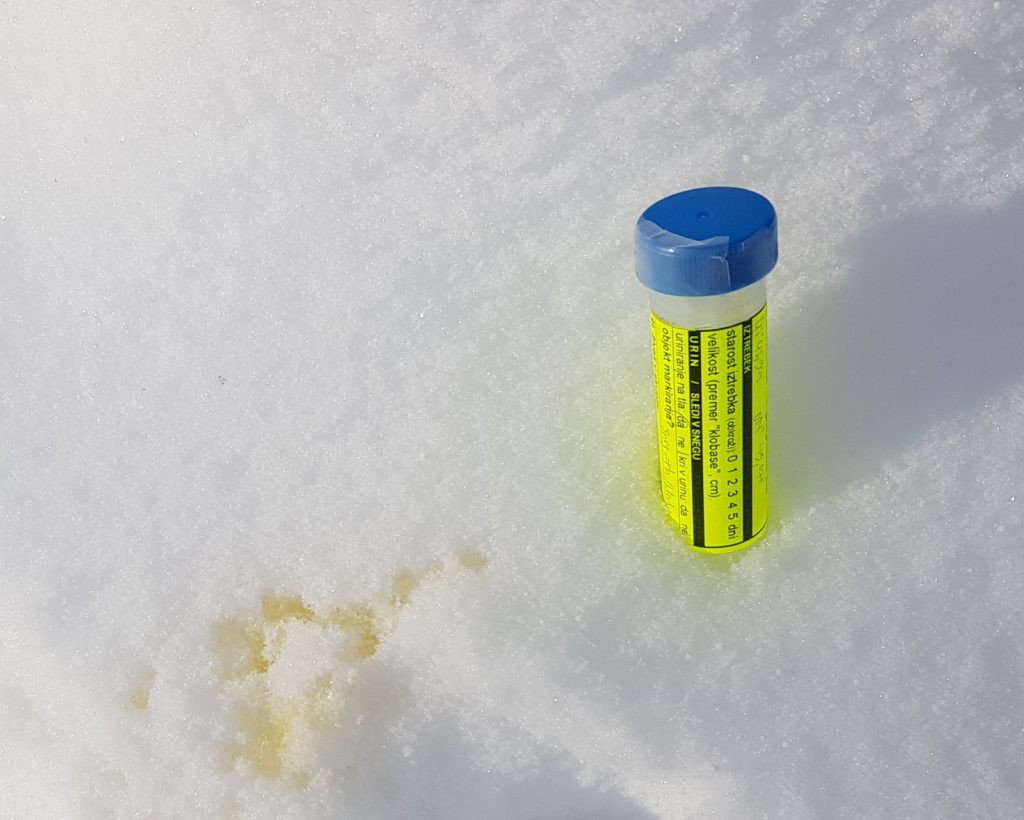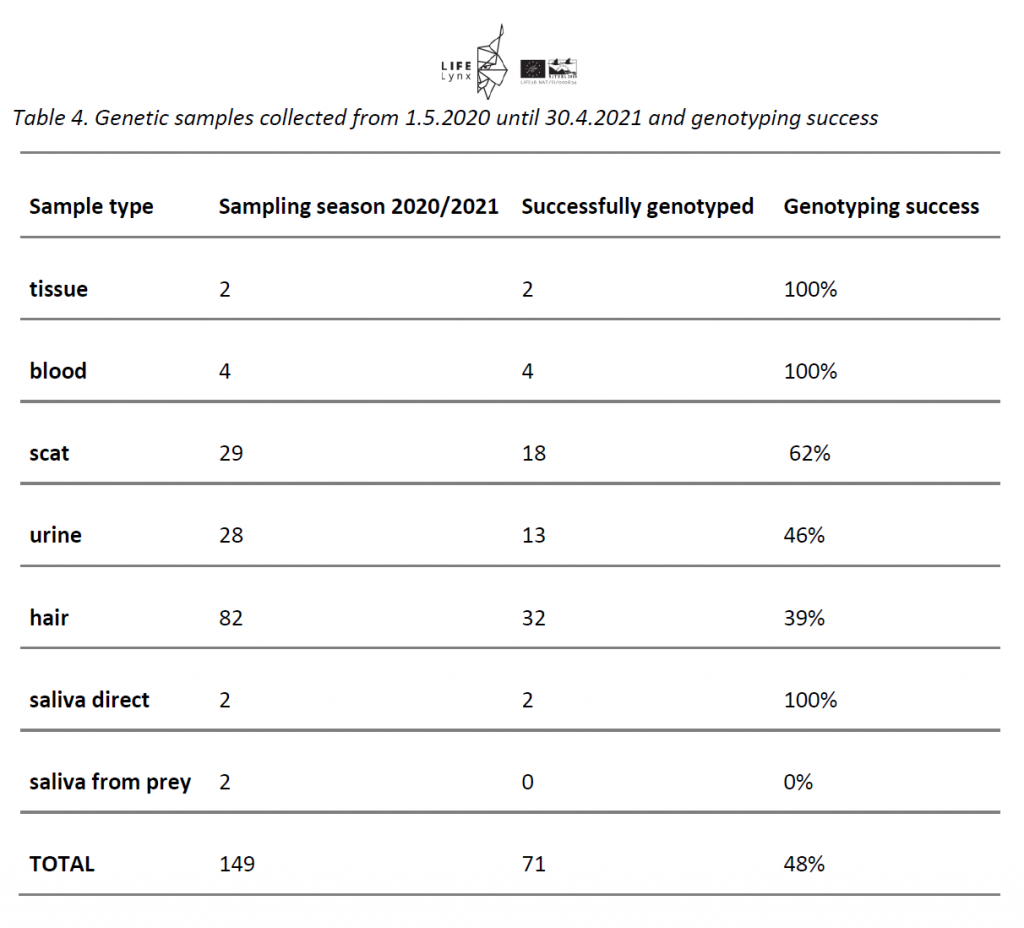Inbreeding is the biggest threat to the Dinaric-SE Alpine lynx population so we monitor the population status also through genetic analyses. Genetic samples of lynx were being collected between May 2020 and April 2021. Altogether 149 genetic samples were collected in Slovenian and Croatian Dinarics and SE Alps (Italy). Most of the samples were hairs, followed by scats and urine.

Urine sample in the snow and the genetic sampling bottle. Photo: LIFE Lynx
Each sample has a label, from which we get the recorded field data. The next step in the laboratory is DNA extraction, where we use different protocols, dependent on the type of the sample. Genotyping starts with the analysis of all the samples, where we get a subset of high quality samples that are used in the next steps. Among these we recognize individual animals and their sex.

Analysis in the genetics laboratory. Photo: Gregor Šubic, film Path of the Lynx

A list of all types of genetic samples, collected in 2020/2021 with the genotyping success for each type.
This year high quality samples represented 48% of collected samples. They belong to 31 different animals, 17 males and 14 females. We pay special attention to identification of translocated lynx and their potential offspring. In this way we can confirm that they are successfully included in the population. More about the results of genetic monitoring is written in the yearly report.
